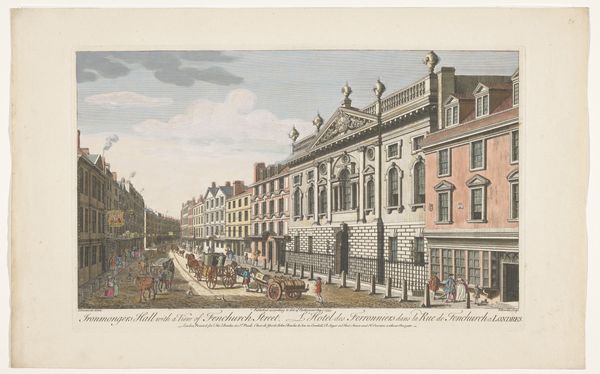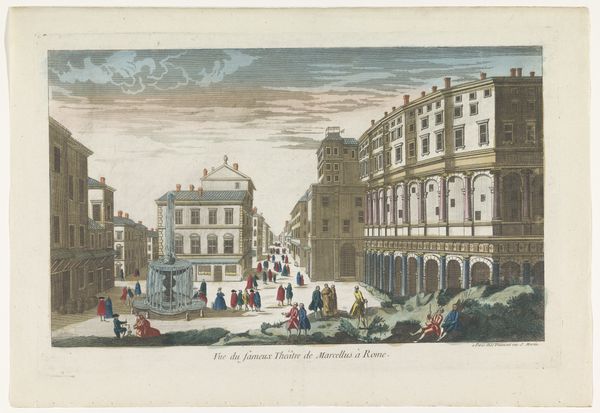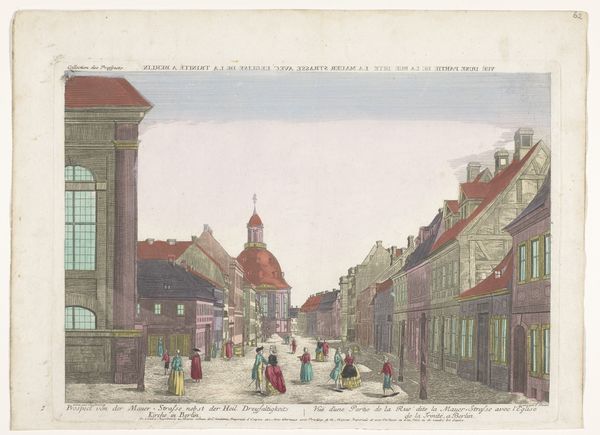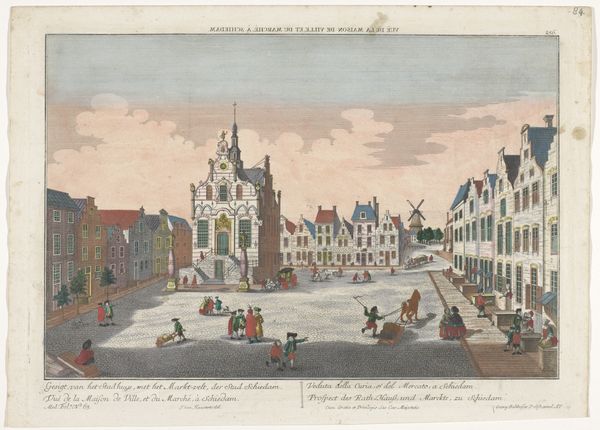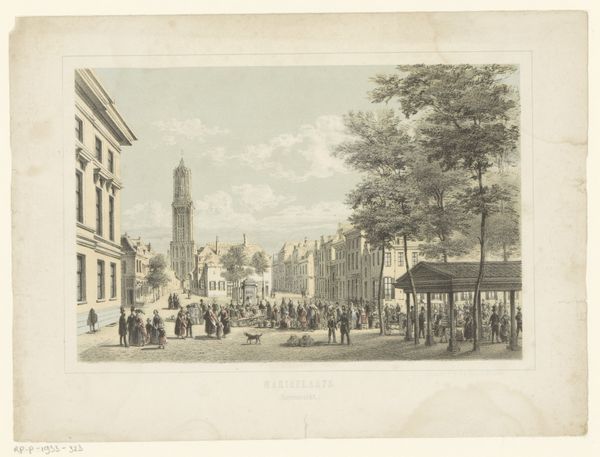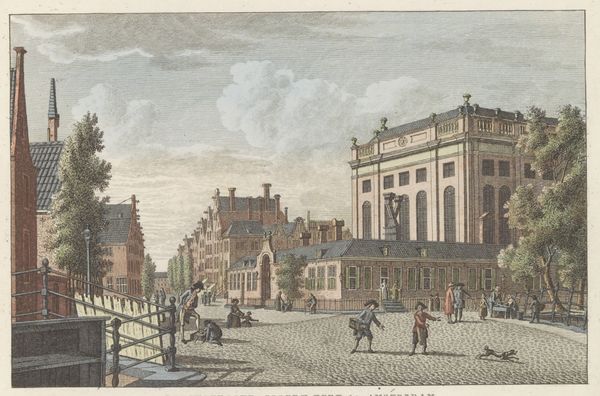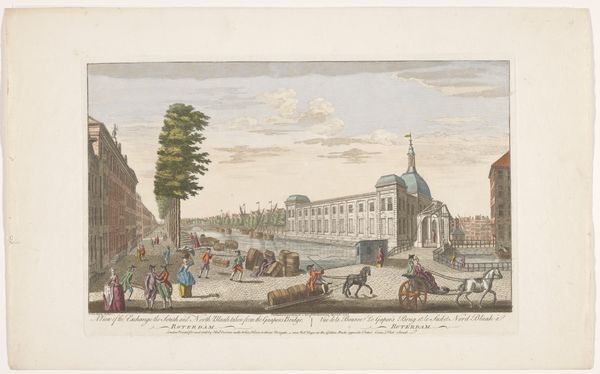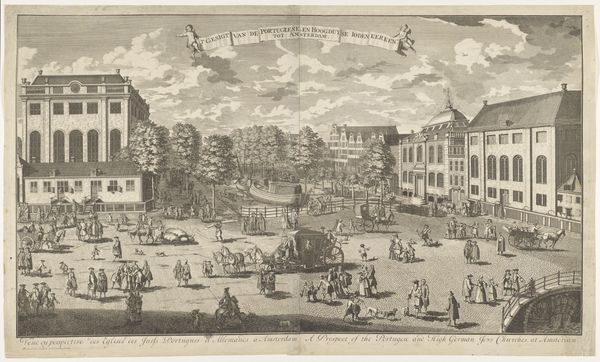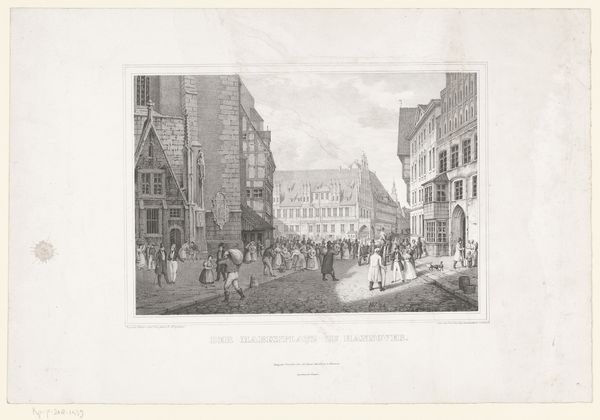
painting, print, watercolor
#
baroque
#
painting
# print
#
landscape
#
watercolor
#
cityscape
Dimensions: height 302 mm, width 436 mm
Copyright: Rijks Museum: Open Domain
Editor: This is "Gezicht op het Mansion House te Londen," created sometime between 1745 and 1775 by Jean-François Daumont. It seems to be a print, perhaps with watercolor, and it depicts a bustling cityscape. I'm struck by the detailed rendering of everyday life, all those people and carriages. What jumps out at you about this piece? Curator: What intrigues me is the intersection of materials and social status displayed here. The print medium itself was becoming increasingly accessible during this period. Think about the labour involved in producing these prints – the engravers, the printers, the colourists if it’s hand-tinted, and the vendors who distributed them. Editor: So, the creation process highlights the socio-economic aspect of art creation? Curator: Precisely. A print like this wasn’t just about depicting a grand building. It’s also a product of a complex system of labour and consumption. The fact that someone commissioned or bought this print suggests a growing middle class with disposable income and an interest in portraying and consuming images of urban life. Look closely at the people depicted - what labour are they performing? Editor: There are people pulling carts, and others carrying items. It suggests that the means of production depended on manpower. What were the dominant industries or materials circulated at this time? Curator: What would this print be used for? Think of its utility beyond simply being viewed as "art". Did this era signal a move away from religious iconography toward secular displays of social, urban, or "useful" status symbols, and how were materials, like pigments for watercolors, implicated? Editor: I never thought about it that way before. It really changes how I see the image, considering the labor and social implications behind its production. Curator: Absolutely. By understanding the materiality and means of production, we gain a deeper appreciation of the artwork’s role within its specific historical and cultural context.
Comments
No comments
Be the first to comment and join the conversation on the ultimate creative platform.
